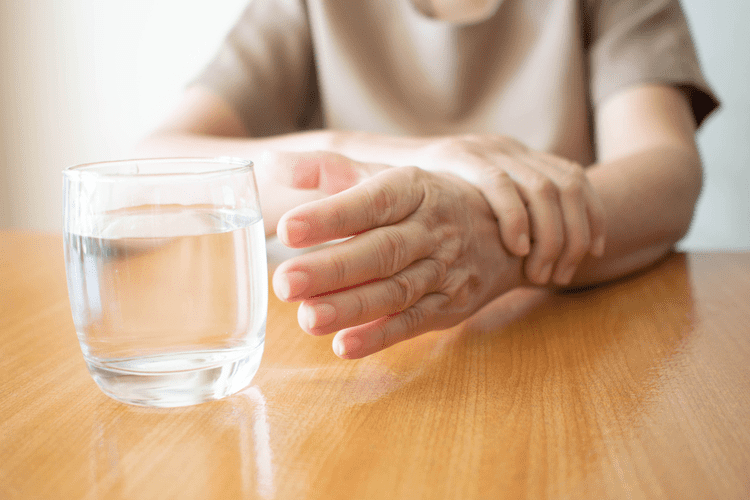How Many Attempts It Takes to Stop Substance Misuse
In essence, emotional relapse is heralded by poor self-care, as a person in the stage of emotional relapse ignores their emotional, psychological, and physical needs. One of the very common yet very dangerous myths of alcohol relapse is that you haven’t really relapsed until you’ve taken a drink. While this is technically true, it’s the wrong way to think about alcohol addiction because alcoholism is not just out-of-control drinking – it’s all the mental, emotional, and behavioral issues that come with it too. There were some interactions between the help groups and the baseline variables in predicting remission (Table 1).
Understanding and Avoiding a Relapse into Addiction
Alcohol relapse occurs when a person returns to drinking after a period of sobriety. For those recovering from alcohol use disorder (AUD), relapse is a common part of the recovery journey. However, relapse is not a sign of failure, but rather a signal that further adjustments to the treatment approach may be necessary. Recognizing the importance of understanding relapse rates and their implications is crucial for both those struggling with addiction and their support systems. Alcohol addiction, one of the most widespread substance use disorders globally, affects millions of people each year.
Understanding the Stages of Change in the Recovery Process
In some cases, physiciansprescribe pain medications following surgery or other health issues withoutknowing the individual is in recovery. Although the use of addictive or mood-altering prescription drugs issometimes necessary, it is important that the recovering person and thephysician communicate openly and work together to prevent drug abuse. We have seen many instances where the abuseof prescription drugs leads a recovering lawyer back to alcohol or to anotherdrug of choice. It is important to remember that recovery is a journey, not a destination, and that relapse does not mean failure.

Myths Of Alcohol Relapse
Compared to individuals who obtained help, those who did not were less likely to achieve 3-year remission and subsequently were more likely to relapse. Less alcohol consumption and fewer drinking problems, more self-efficacy and less reliance on avoidance coping at baseline predicted 3-year remission; this was especially true of individuals who remitted without help. These findings held for individuals who initially obtained help and for those who did not. Studies suggest that up to 90% of people who try to quit drinking will experience at least one relapse.
People who are in the first stage of addiction recovery aren’t yet ready for any addiction treatment program. This phase is characterized by defensiveness and endless justification of their behavior. There’s a clear lack of insight into the negative impact of excessive drug or alcohol use and a strong focus on the positive effects they experience from using their drug of choice. Alcohol and drug abuse can tear families apart and transform loving and successful individuals into desperate, lonely husks of their former selves. Even though the impact is devastating, there is a light at the end of the tunnel. Anyone can overcome addiction with the help and guidance of a substance abuse treatment program.
Updated Overdose Statistics 2025: Trends in Drug-Related Deaths
Emphasizing that the biggest error at this stage is to underestimate the amount of help needed to quit drinking is critical. The patient should be given a list of options for treatment including AA and pharmacotherapy. The individual expresses a tentative belief in the possibility that alcohol use might be harmful. Skepticism is not the same as denial but instead allows some degree of personal reflection. The patient is receptive to new information, or just as likely reassured that current behavior is acceptable, in the absence of information. Thus, the clinician should influence the ambivalence characteristic of contemplation in a direction favoring change.
- Every year or two, there isanother story of a lawyer or judge who relapses to alcohol or drug addictionafter long-term sobriety.
- Aftercare is essential for preventing relapse and maintaining progress after formal treatment ends.
- As detailed in previous publications from this sample, eligible participants (i.e., endorsed having resolved a significant substance problem) were 44 years old on average, 40% female, and 39% identified as a racial/ethnic minority.
While the statistics may seem daunting, they also emphasize the need for comprehensive support systems, tailored treatment plans, and continued research into factors influencing relapse. Recognizing that addiction is a chronic condition and relapse a common part of the recovery journey can help mitigate stigma and foster a more supportive environment for individuals battling substance use disorders. The journey to recovery may be fraught with challenges, but with persistent effort, support, and adaptation of strategies, long-term sobriety is an attainable goal for many. These statistics highlight the necessity for tailored treatment plans and ongoing support, emphasizing that some substances pose greater risks for relapse than others.
Summary of Relapse Factors
His wife was a community leader; he had a daughter in law school and ason studying at an Ivy League college. Reframe supports you in reducing alcohol consumption how many relapses before sobriety and enhancing your well-being. Plus, we’re always introducing new features to optimize your in-app experience.
Factors Influencing Recovery Attempts
Those who remitted without help tended to consume less alcohol, have fewer drinking problems, possess more self-efficacy, and rely less on avoidance coping compared to individuals who relapsed within 16 years. These findings held true for both individuals who obtained help and those who did not seek help 7. When it comes to alcohol addiction, seeking help is a crucial step towards recovery. Recognizing the importance of help-seeking, various resources and services are available to support individuals struggling with alcohol addiction. These resources aim to provide assistance, guidance, and promote harm reduction and overdose prevention.

Individuals who continue to refine their approach – through better coping skills, expanded social support, and persistent engagement in professional treatment – stand an excellent chance of achieving lasting sobriety. The median number of recovery attempts prior to successful AOD problem resolution may be substantially lower than most people might have guessed. Yet, it is these more severe subgroups that are perceived as the norm, when the opposite is in fact true. Available data on recovery attempt patterns and outcomes reside primarily within clinical follow‐up studies of addiction treatment, studies of professional assistance programs, and recent “Life in Recovery” surveys. Dennis and colleagues (2005) conducted a 5‐year follow‐up of more than 1,200 predominately minority patients admitted to publicly funded addiction treatment in a large U.S. metropolitan area. Laudet and White (2004) conducted a 5‐year follow‐up of 354 people in recovery living in New York City, most of whom reported both prior addiction treatment and mutual‐help group participation.
Relapse should be viewed as a part of the recovery process rather than a sign of failure. By understanding relapse triggers, developing effective coping mechanisms, and seeking appropriate support, individuals can reduce the frequency and duration of relapses, increasing their chances of sustained recovery. While this might sound discouraging, especially after completing rehab, it’s important to remember that relapse isn’t a sign of failure. Instead, it serves as an opportunity to learn and strengthen long-term sobriety.
In the preparation and action stages, clients can access intensive outpatient programming (IOP), group therapy, individual counseling, and EMDR for trauma-related Sober living house addiction. Even when someone has reached maintenance, it doesn’t mean they’re cured of addiction. Like diabetes or heart disease, it’s a chronic condition that requires major lifestyle changes to keep under control.







